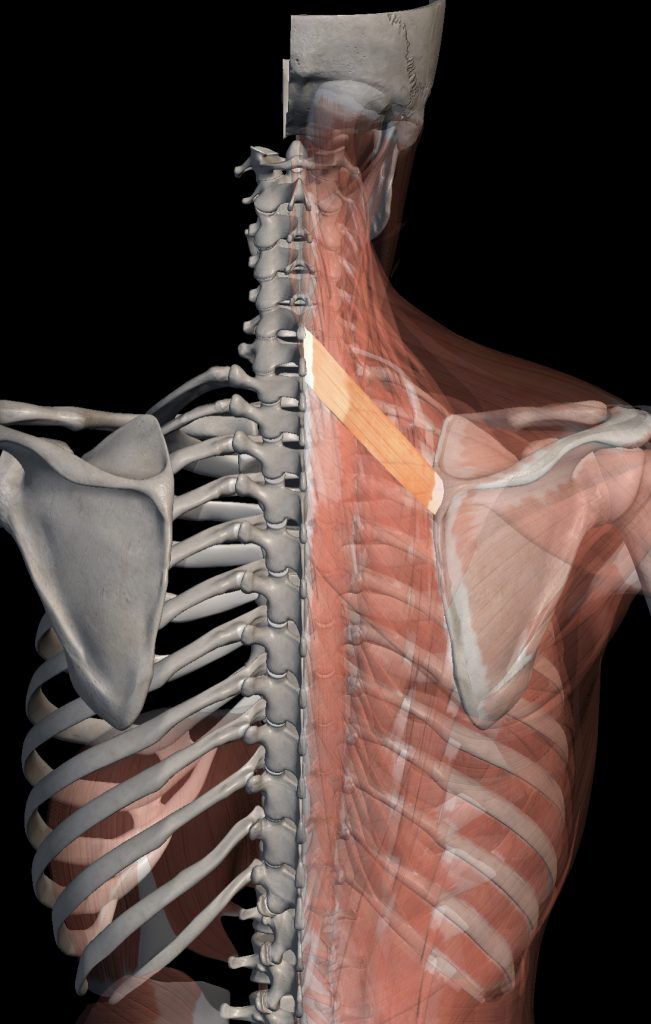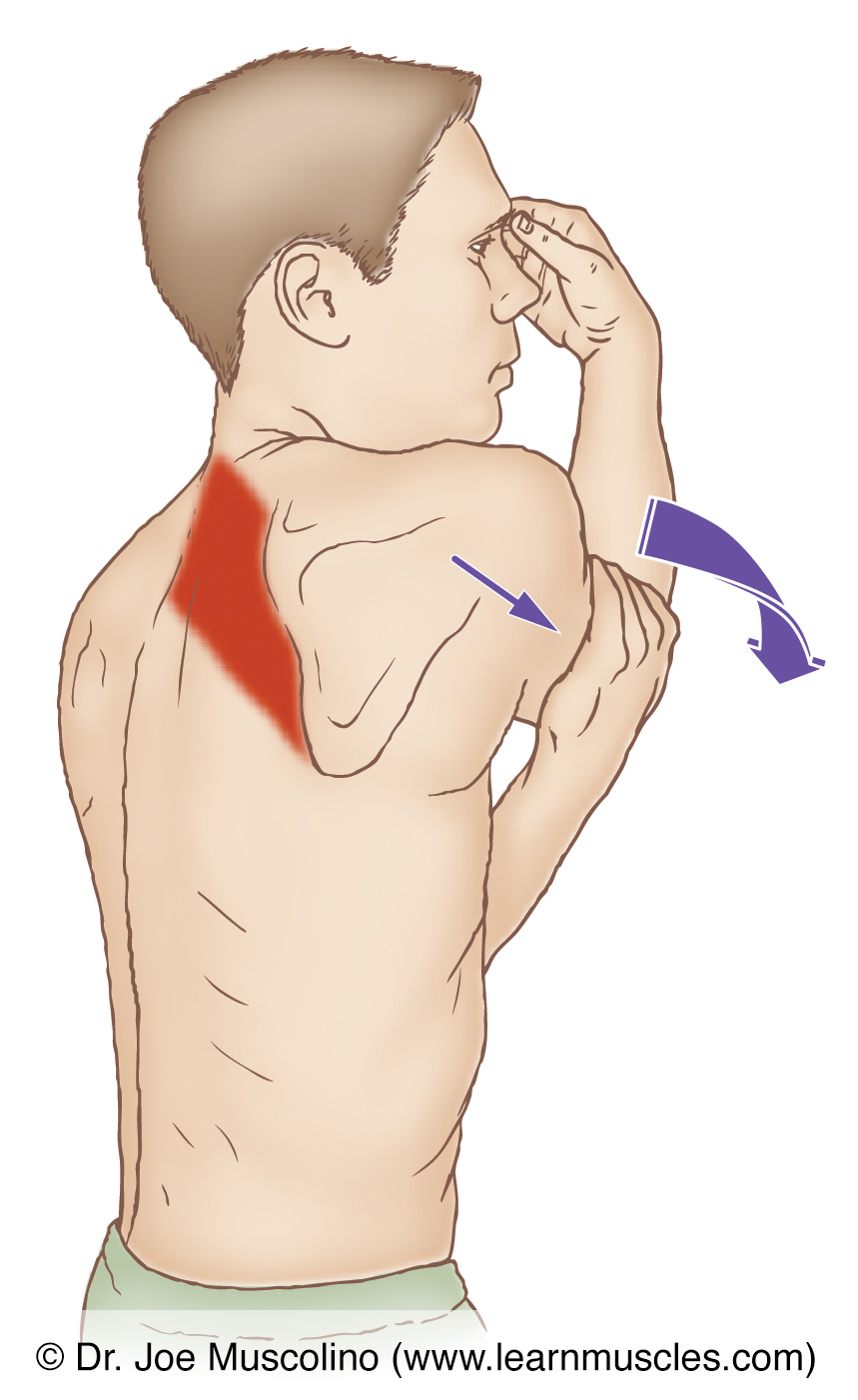Before I was working on my fitness, I led a predominately sedentary life for the majority of my adult life. As a result, I developed a susceptibility to rhomboid spasms. I’ll never forget my first one. Honestly, I felt fine that day, my day was normal: worked on my computer all day, and then decided to take a hot shower; one of my favorite things to do to relax. It was winter in Illinois, and we kept the apartment pretty cool to save money on heating. I finished up with my shower, opened the door to get out of the shower, and stepped out. As soon as the cold hit my back, my rhomboid spasmed so hard I hit the floor in agony. It was very painful, and I had to have someone come and help me off of the floor. It felt like someone grabbed the middle of my rhomboid with a pair of pliers and slowly squeezed until they couldn’t squeeze any more. From that point on, I couldn’t stand for longer than 5 to 10 minutes without feeling a pinch in that location. Luckily, as my fitness improves, the spasms have gotten fewer and fewer and I don’t really feel that same pinch when standing for long periods of time.
Sometimes, I can still get a spasm. This typically happens when my training volume increases. When this happens, I have developed a protocol for dealing with them quickly so I can keep training and not be in pain. A word of caution is in order: the advice I give here works for me, and may not work for you. Also, I am not a medical professional.
Where is the rhomboid?
First, make sure you actually have a rhomboid spasm; for the best information, please consult a doctor. The rhomboid is actually two muscles: the rhomboid major and the rhomboid minor. Both attach from the spine to the scapula (shoulder blade).


A spasm occurs when the muscle involuntary contracts. This can happen for just a few seconds, but when it comes to back muscles, it can be a few weeks. Spasms most often happen due to stress, like eyelids twitching, but a back spasm is usually quite painful. Personally, I get my spasm in the right rhomboid major near the scapula. Figuring out where the spasm is can greatly increase your ability to target it using stretches and smashing which are two major parts of my protocol.
The protocol
- Stop. As soon as the spasm occurs, stop what you are doing and stop your training. I always stop right away, and then take the next day or more off depending on how it is feeling.
- Ice. Now ice isn’t always the best when it comes to sore muscles and post-training recovery. But, for spasms it’s been shown to be effective at reducing inflammation and pain, ultimately relaxing the spasm.
For the next day or two, I ice the spasm for 15 to 20 minutes every 3 hours. I use an ice pack that is textured in a small formation of cubes, like little ice bubbles. I place the pack on the edge of the couch without the back cushion so that while I sit I can massage the ice bubbles into the muscle. This massage loosens the muscle up as it relaxes from the ice. - Smash. I live life with a lacrosse ball around. I have one in every room of my house and in my gym bag at all times. Smashing the rhomboid is necessary and will help it heal and loosen up quickly, but I’m not going to lie, it’s going to hurt at first.
Here is how I go about it: I place the lacrosse ball between my rhomboid, see the pictures above for location, and the wall. Then cross my arms in front of me with my elbows up and away from my body. Then just apply pressure to the ball pressing it into my muscle. Then I move it slightly around the muscle pausing at any spots that hurt and applying pressure. For me, the best and most painful area is pressing it almost under my scapula and then working it down along the length of my scapula pausing every time I move the ball down and letting it sink in. This is great for opening up your t-spine.
I smash about 2 to 3 times a day for the first two days. Honestly, I do this smash every morning and every evening before bed to help keep my t-spine loose and to help prevent these spasms.

- Stretch. There are two stretches that I love that help to loosen and mobilize the rhomboid muscles.
The first is the arm stretch depicted in the image on the right. Instead of using my other arm to stretch it I like to lay on the floor and put my arm across my body in the same position as in the picture, but I use my body to apply more pressure and get a deeper stretch. It’s also easier to do it longer when your arms are super tired from training.
The second is similar, but is a standing doorway stretch. It’s depicted on the left. You can also do this using a single arm. I tend to do the side that the spasm is on, but both is good too.
That’s the protocol. These days, I can get over a spasm in as little as two days and be back training full volume.
Leave a Reply